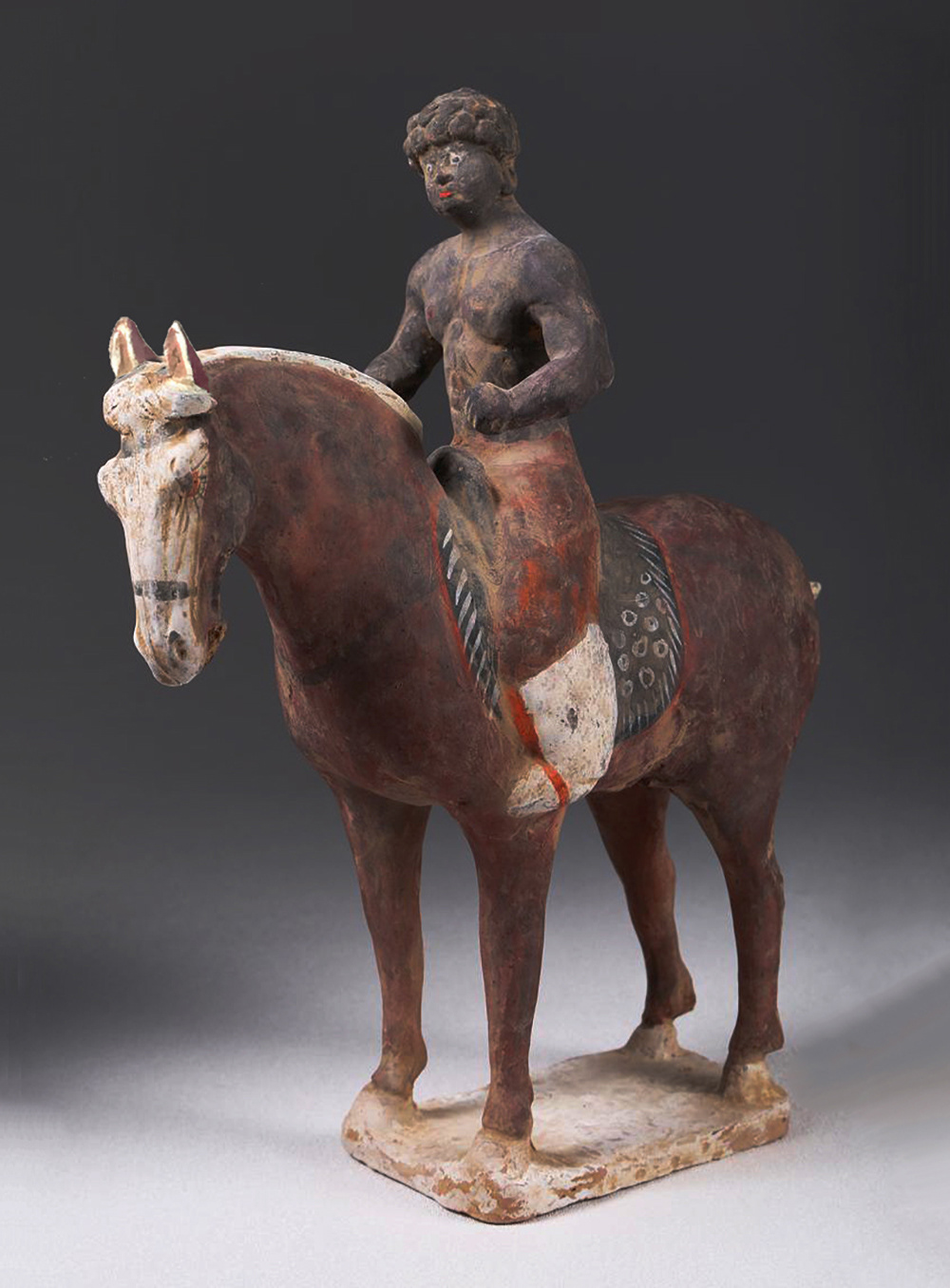

TANG DYNASTY This figure of an African rider atop a painted model of a horse is extremely rare. He may be an example of many dark skinned servants in the Tang Dynasty that were called Kunlun Nu. Kunlun Nu is a generic term referring to all dark skinned, curly haired people from Africa, South east Asia and India. Those who were from Africa were mostly from Zanzibar, believed to be brought in by Arabian merchants via the Silk Road. But it has been argued that the majority Kunlun Nu during the Tang were Southeast Asia Malay people brought in from Saigon. Since all dark skinned people were called Kunlun Nu, it is not easy to tell if this figure was a slave or not. However, black slaves were traded during the Tang until the Ming. The slaves were either brought in by Arabian slave traders or sold in the Saigon slave market, which was Asia’s biggest slave market. Kunlun Nu were popular as servants or trained to perform singing and dancing. There were never very many Africans enslaved in China, as they were expensive and different. Rich Chinese families used African slaves as doorkeepers to show off their wealth. This unglazed earthenware figure is covered in a white slip which has then been painted. There is a restored break to the body of the horse behind the rider and at the top of each leg, with both ears restored, and the figure has a restored break at the neck; with a drill hole to the interior back thigh of the horse. Painted earthenware 10.5 x 12.25 in. (26.67 x 31.12 cm.) The results of Oxford Authentication Thermolumninescence Test 766b19 is consistent with the dating of this lot. PRICE AVAILABLE UPON REQUEST
